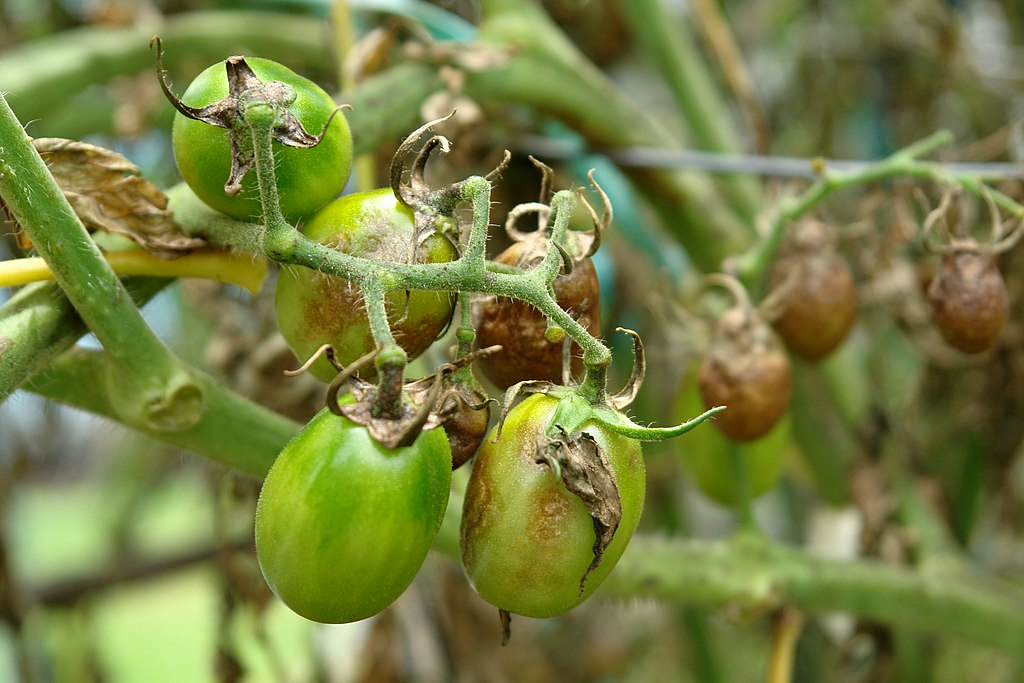Brown rot
How to get rid of brown rot
Older leaves and stems may initially show dark brown spots. Later a white or purple layer of spores develops on the underside of the leaves, resembling mould. Roots and tubers are also later affected.
Treatment
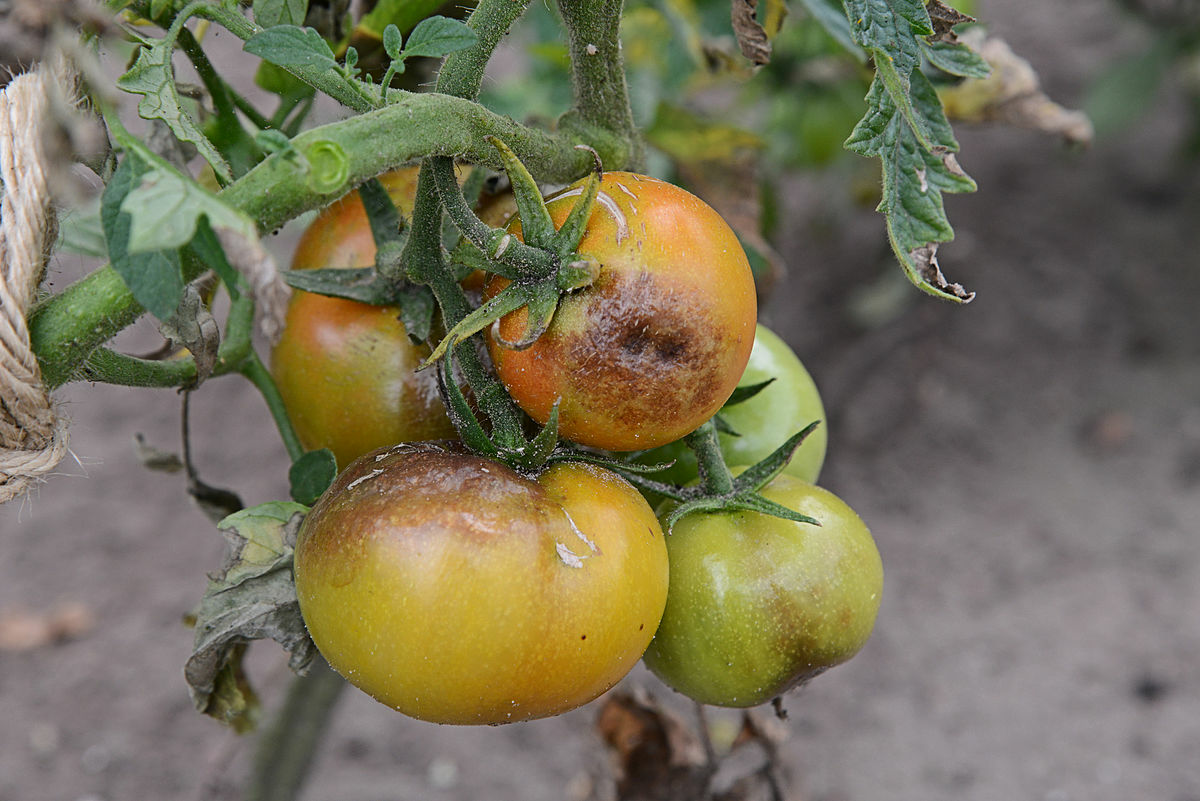
The problem is that the damage occurs relatively late in the season, so it is often too late to stop the spread. The fungus needs sufficient moisture to grow, which is why brown rot often occurs in wet weather or when dew forms at night. In particular, cooler temperatures below 15 ° C/59 ° F produce zoospores, which can move independently in water. This can lead to an explosive spread. They can also be spread from plant to plant by contact or rain. Wind also spreads them over long distances. Preventive measures Spraying with stinging nettle or onion-garlic decoction can protect against infestation. In addition, potato plants should not be planted too close together so that rain or dew can dry off well. If you suspect an infestation, remove the affected parts of the plant immediately to slow the spread. However, brown rot often brings the potato and tomato season to an end. For potatoes, waxy varieties are less at risk. Harvest residues should be removed immediately (do not compost). In addition, shade crops should not be grown on the same site after an outbreak, as the fungus can overwinter.
General Information
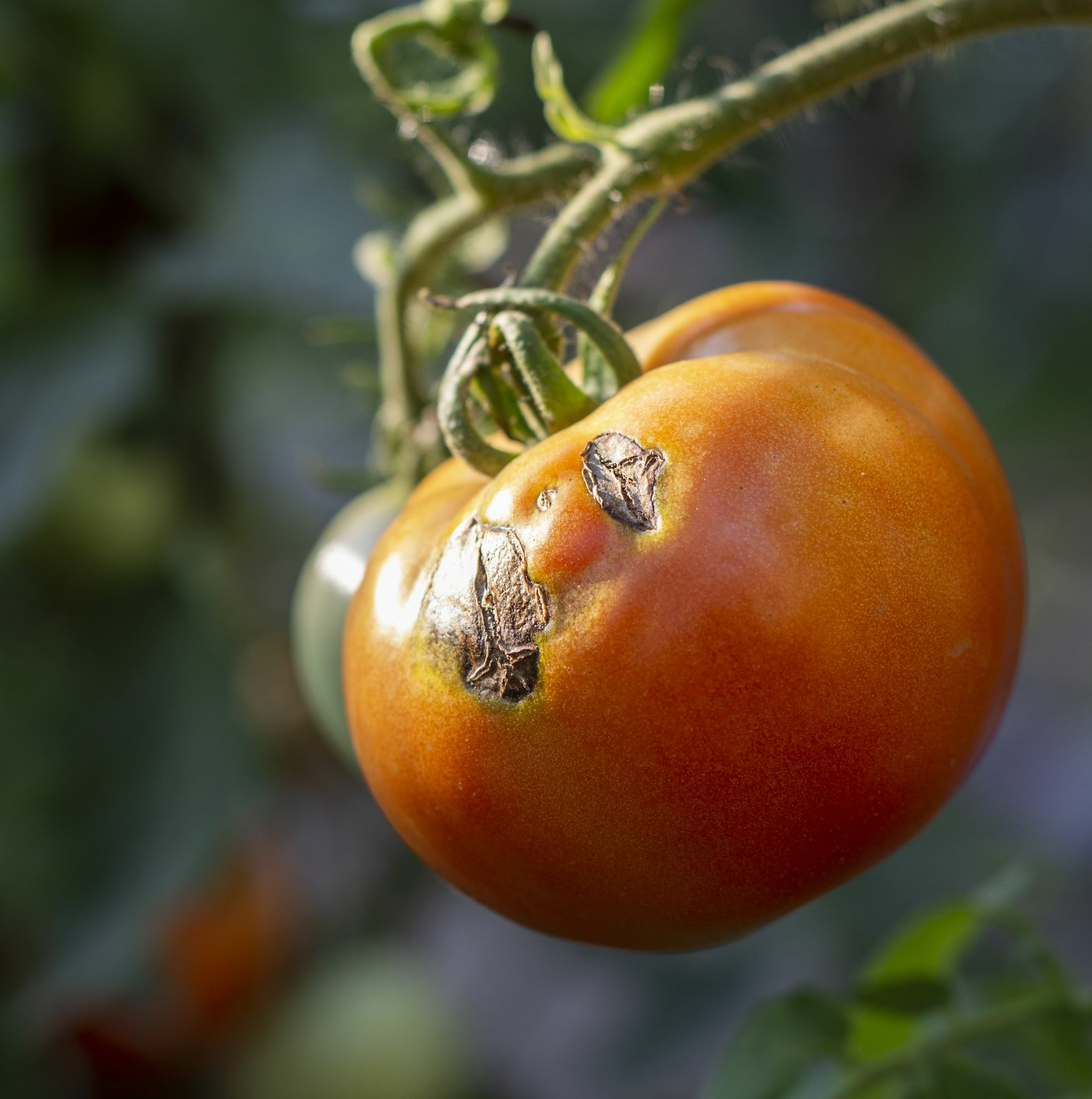
Phytophthora infestans is a soil-borne pathogen that usually reaches the aerial parts of the plant via spray water. The fungal spores are in or on the soil and are then catapulted onto the leaves by rain or poor watering, where they infect the plant. The most important measure is therefore to reduce the amount of splashing water when it rains or when watering. You can read more about this in the 'Preventing Late Blight' section.
The spores of the fungus are used to multiply and spread; they usually overwinter in seed potatoes, waiting for favourable conditions in early summer. From May/June they can be spread by wind or water spray to other potatoes or tomato plants. In moist conditions, the spores germinate and produce motile zoospores, which infect the leaves and later the stems and fruit.
Symptoms
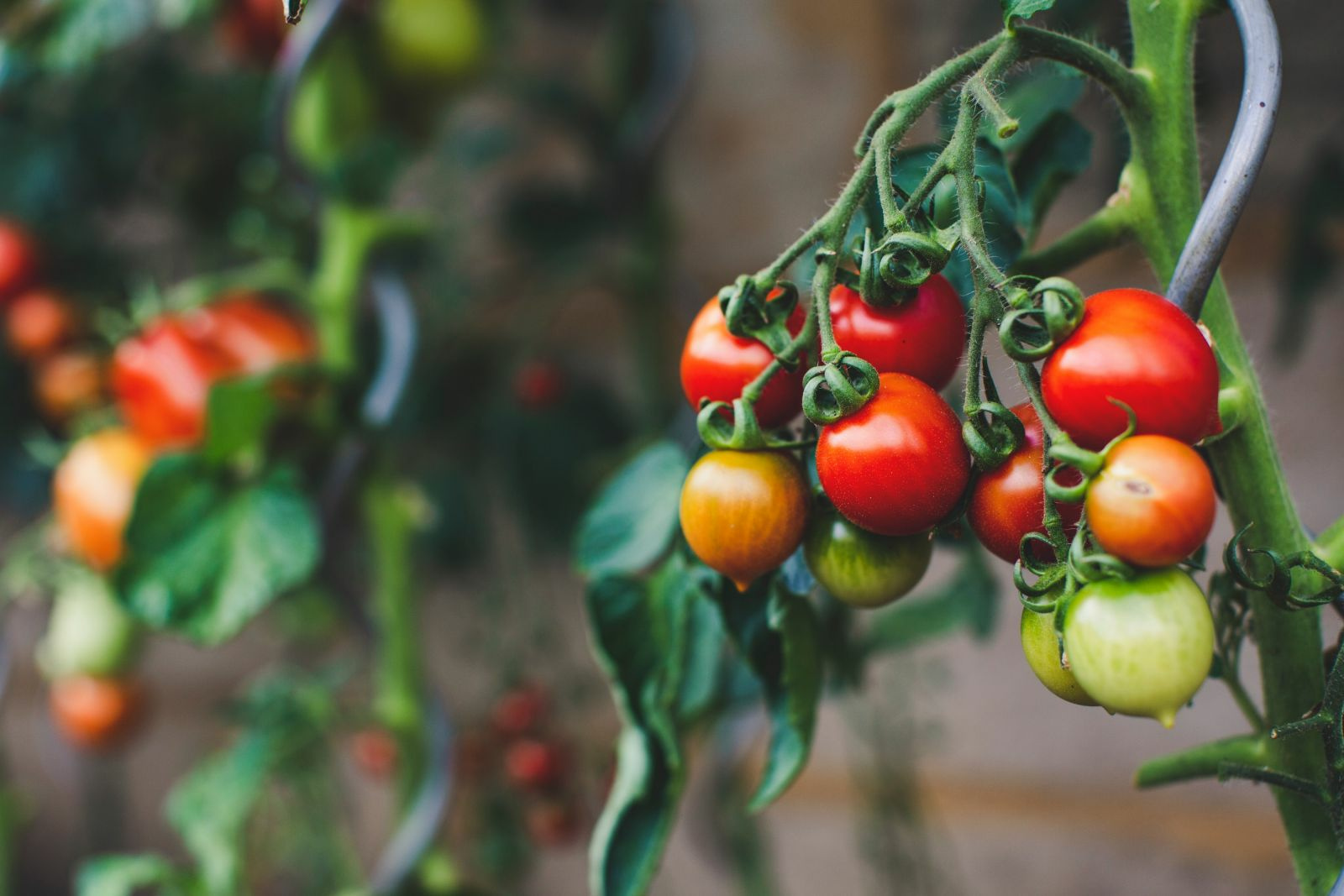
When it rains, the leaves closest to the ground are the first to be affected. Olive-brown spots and a fine, whitish spore ring form on the underside of the leaves. The brown spots spread over the leaves and stems. Over time, the leaves turn black, begin to wilt and eventually die. Brownish-black spots also appear on the fruit. The tomatoes then become hard and rot. Again, motile zoospores are formed, which are spread by water droplets and can infect new parts of the plant. The risk of Phytophthora infection is greatest in humid weather around 15 ° C/59 ° F. Similar symptoms appear on the leaves and stems of potatoes until the tubers begin to rot in the soil.
Prevention
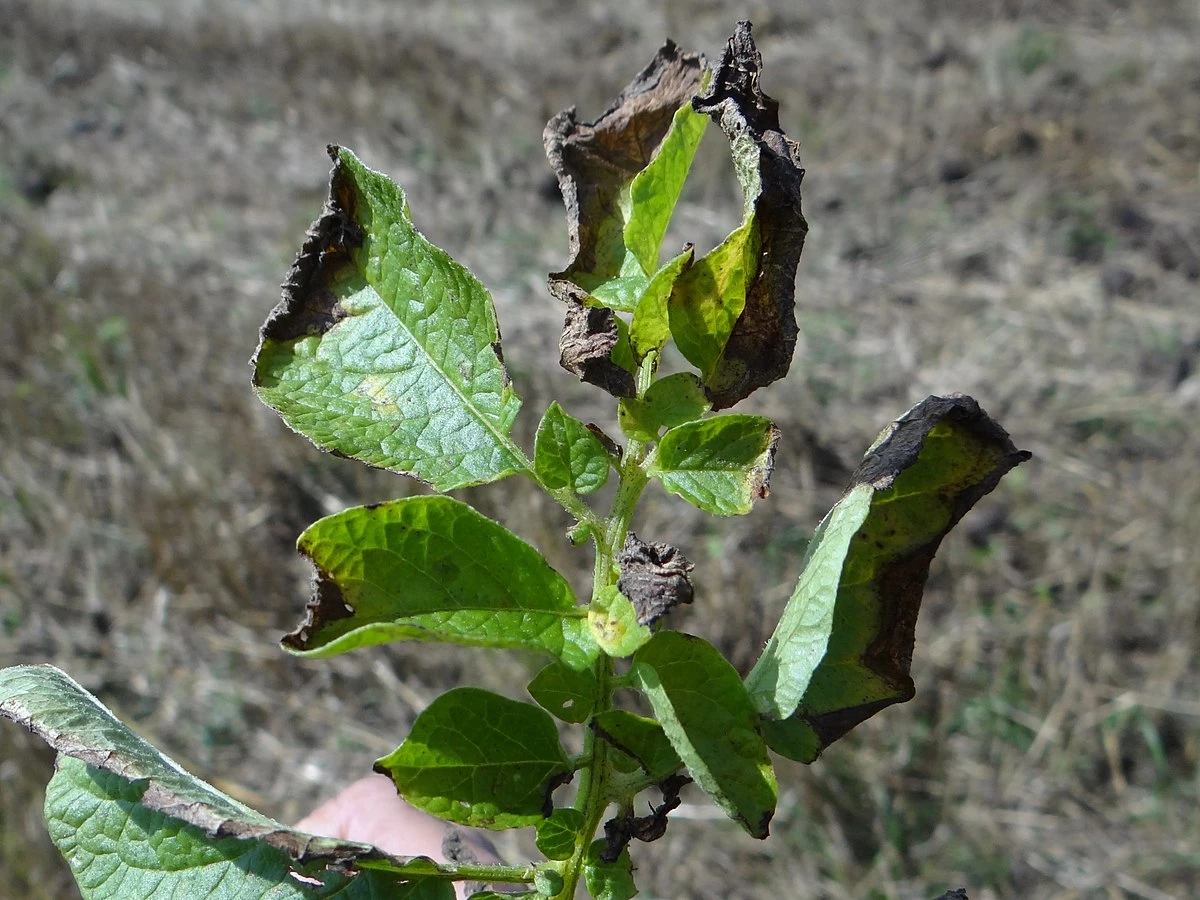
-
Space the plants far enough apart: Plant your tomatoes at a distance of 70 cm/27.5 in from each other so that the leaves do not touch. If you still want to save space in your garden, fill the gaps with other vegetables that are not affected by the fungus. Suitable mixed partners include runner beans, lettuce and herbs such as basil or nasturtium. Planting in gaps acts as a barrier between individual tomato plants, reducing the spread of Phytophthora. Choose low-growing neighbours so that the lower tomato leaves are still well ventilated. It is also a good idea to plant tomatoes in single rows
-
water close to the ground: As Phytophthora is spread by splashing water, proper watering is one of the most important preventative measures. Make sure your tomatoes are watered as close to the ground as possible and that the leaves are dry. One common method is to bury a plastic pot next to each tomato so that it protrudes slightly above the soil. The pot then acts as a funnel, directing water to the roots where the plant needs it
-
growing tomatoes under cover: Tomatoes are usually grown under plastic to protect them from blight. The reason is the same: when it rains, the raindrops hit the ground from above, creating a spray that wets the stems and leaves and carries the fungus. If you cover your soil with mulch, you can also avoid splashing water. Even when growing under cover, it is important that the tomato crop is well ventilated from both sides. The structure should be open at the sides to allow air to circulate. Also, choose a sunny location for your plants so that they can dry out better when it gets wet
-
plant hygiene: Once your tomatoes are big enough, you can remove the leaves below the first flower. This will reduce the surface area that can easily be infested close to the ground. Spray your tomatoes with horsetail tea several times a week from mid-June to strengthen them against fungal diseases. However, you should stop spraying just before harvest as it can affect the flavour of the fruit. Dusting the plants with seaweed lime or rock flour can also help to minimise infestation through the leaves. Loose soil without waterlogging is also important for healthy, resistant plants
-
use resistant tomato varieties: There are no totally resistant tomato varieties that will not get blight at all. However, there are varieties that are more resistant than others. These include 'Philovita', 'De Berao', 'Harzfeuer', 'Primavera' and 'Phantasia'. These hardy tomato varieties are more suitable for outdoor growing, but will still benefit from the measures described above to reduce late blight - be vigilant: Check your plants regularly from mid-June to detect any infestation early. It is often the case that Phytophthora spreads rapidly through the tomato crop towards the end of the season. However, by carefully following the recommended preventative measures, you can delay or prevent the spread of the pathogen until after the final harvest. It is important to be vigilant at all times and to act promptly in the event of an infestation!
Treatment
Remove diseased plant parts: Infested plant parts such as leaves and fruit should be identified and removed immediately. The spores are very long-lived and robust and should not be composted. Good hygiene is also important. Disinfect all objects that come into contact with the tomato plants (pruning shears, sticks, climbing aids). This can be done with boiling water or a gas burner.
Keep to crop rotation and mixed cultivation: Potatoes can also be infected by Phytophthora, so be careful not to plant them next to tomatoes. Choose a wide crop rotation for susceptible crops, so that tomatoes and potatoes are not grown in close succession. Because tomatoes are self-tolerant, they are often planted in the same spot every year. As long as the plants are healthy and all the precautions are taken, there is nothing wrong with a perennial tomato bed. However, as soon as late blight appears, you should mix the plants in your beds more thoroughly so as not to encourage the pathogen unnecessarily. A covered tomato bed can be used for longer than an outdoor one.
Foto: Scot Nelson from Honolulu, Hawaii, USA, CC0, via Wikimedia Commons
